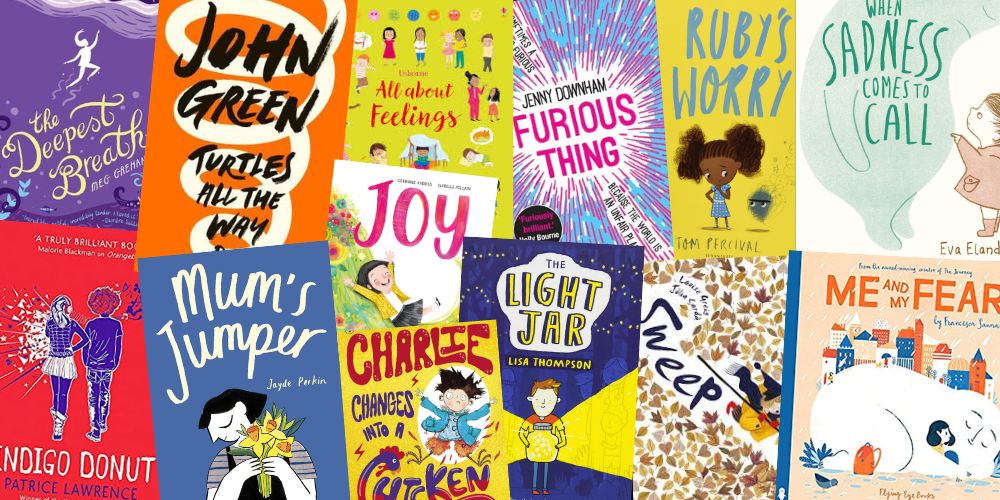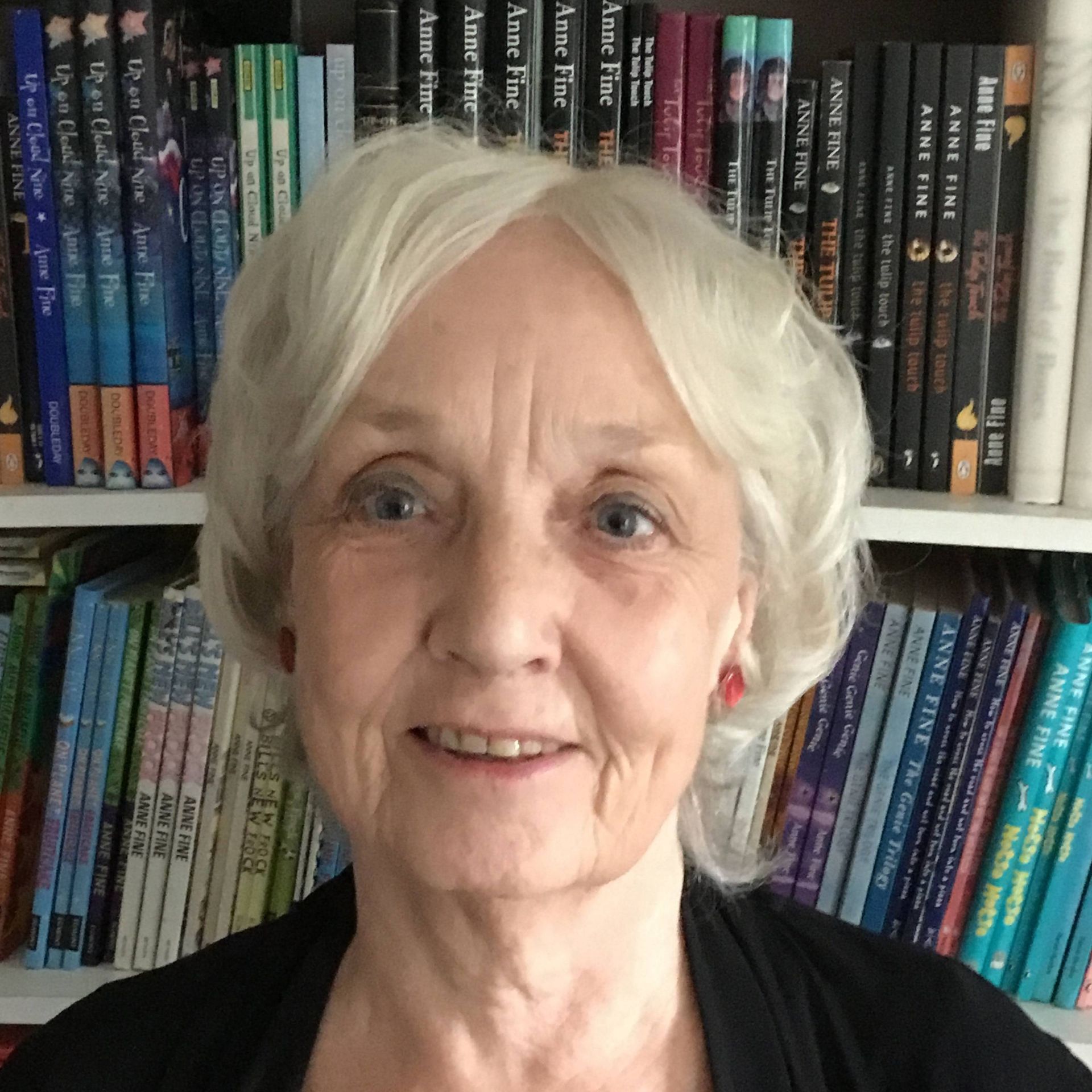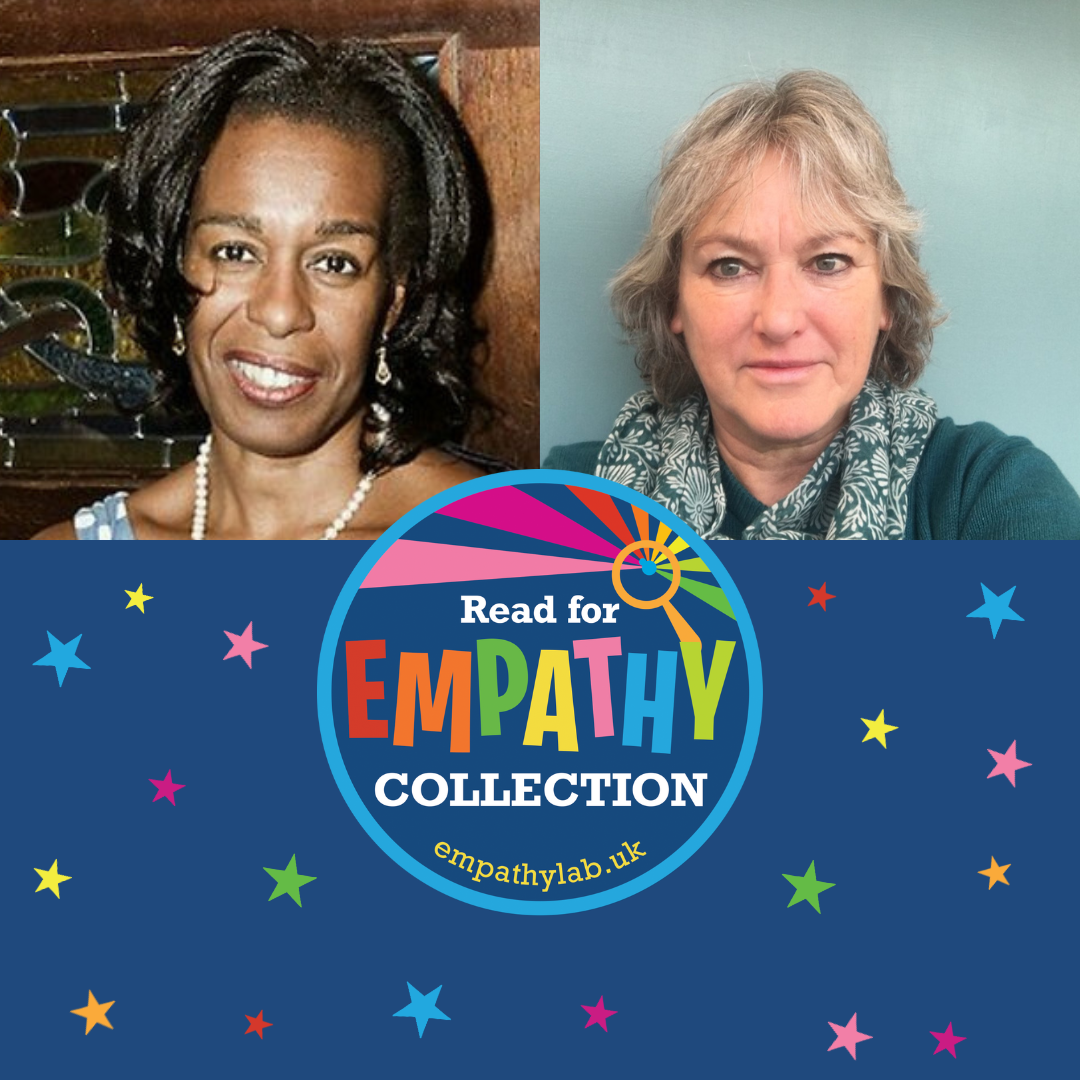#ReadforEmpathy books exploring feelings
- By EmpathyLab
- •
- 01 Oct, 2020
- •
What will you be reading on #WorldMentalHealth Day?

Reading for empathy helps us understand why people might feel the way they do. Not only that, but reading can also open up conversations around mental health safely.
#WorldMentalHealthDay takes place on 10 October and, as part of that, we want to share books from our #ReadforEmpathy collections that deal with understanding emotions and mental health. The list below includes books for children between 4-16 years old, from picture books right up to YA novels.
Please note that an asterisk (*) denotes books which are demanding, often emotional reads, suitable for emotionally mature readers. Please read them in order to decide which children they are appropriate for.
Picture books & poetry (4-11 years)
When Sadness Comes to Call by Eva Eland
Being able to recognise, name and share emotions is a key empathy skill. This lovely book personifies sadness, and gently walks the reader through how it feels. A reminder that sadness is not to be feared.
All About Feelings by Felicity Brooks & Frankie Allen, illustrated by Mar Ferrero
A great starting point to talk about feelings, why we have them and how we express them. Informative, well-illustrated non-fiction book with useful prompts for activities and reflection. Especially useful for supporting children finding it difficult to understand emotions.
Mum’s Jumper by Jayde Perkin
A wonderful, tear-jerking book about grief and eventual recovery, with a message that lingers. Helps both adults and children understand the experience of any child who has lost a parent.
Joy by Corrinne Averiss, illustrated by Isabelle Follath
Fern is troubled by how sad her granny seems and is working out how to capture and pass on ‘joy’. Great for talking about emotions and really grasping what someone else needs.
Sweep by Louise Greig, illustrated by Júlia Sardà
Ed is swept up in a very angry mood and just can’t let it go. A creative, playful story encouraging the recognition and processing of emotions.
Me and My Fear by Francesca Sanna*
A thought-provoking visual personification of a girl’s feeling of fear, which magnifies when she’s in a strange country. Helps children understand how profoundly fear can lead to isolation and anger.
Ruby’s Worry by Tom Percival
Sensitively illustrated book about untamed worries taking on monstrous proportions. Gives children a language and metaphor to talk about their own and other people’s anxieties.
Novels and graphic novels (7-11 years)
Charlie Changes Into A Chicken
by Sam Copeland, illustrated by Sarah Horne
Every time Charlie is stressed or worried, he changes into an animal, with hugely inconvenient consequences. Highly enjoyable, laugh-out-loud read – an easy way to open up an exploration of what anxiety feels like.
The Deepest Breath by Meg Grehan
11-year-old Stevie is deeply confused by the emotions she feels towards a girl in her class. We feel great empathy for her anxiety and cheer on the sensitive librarian who listens and understands. A short, magnificently written verse story for young teenagers.
The Light Jar by Lisa Thompson*
Nate and his mum escape domestic abuse but then she disappears. Exciting story which builds understanding of human psychology as Nate’s imaginary friend comes to his aid.
Novels for older readers (11-16 years)
Furious Thing by Jenny Downham*
A daughter is nearly destroyed by her father’s emotional abuse, but she finds the strength to challenge him, and saves herself and her mother. Powerfully builds insight into the experience of survival, and recovery.
Indigo Donut by Patrice Lawrence*
Indigo lives with a kind foster mum, but carries almost unbearable emotional pain. Gritty, powerful read – helps us understand how overwhelming emotions can lead us to reject the very people who care most.
Turtles All the Way Down by John Green*
Told from the perspective of an older teenager battling anxiety but not letting this define her. A fascinating mystery story is woven into Aza’s journey as she deals with issues of love and friendship. Great insight into debilitating mental-health issues.

Why has the sheer importance of empathy come to the fore in recent years? Why do we care so much about a concept that had seemed to be left to itself for so long?
Perhaps because there has been so much change and upheaval for our young people in recent years, leaving so many isolated from what we might term ‘real’ contact with others. Lockdown was for many a disaster. The proliferation of phones hasn’t helped. Financially stretched families are often starved of time that can be spent in casual, easy, contact with one another.
So gaining an understanding of others from fiction has become more and more important. Children have always learned from the books and stories they are offered. From the fairy tales, children who lived in an elemental world without luxuries or social safety nets learned the virtues that were so necessary back then to survival: courage, resourcefulness, endurance, quick wits, kindness to strangers.
Our own young people live more tightly under separate roofs, and we have seen the language of books change accordingly - to Mum, the babysitter, playgroup, park, baby sister, Dad’s girlfriend, the bully, happy, worried, sad. It’s the language of relationships and emotions now, and understanding and compassion liberate. They have become the twenty-first century equivalent of Hansel and Gretel’s pebbles gleaming in the moonlight to show the way out of the dark forest.
Frank Flanagan once said good writers “structure, explain and evaluate the experience of childhood and empower the child to come to terms with it. They enable the child to lead a full life."
How? Partly by quite unconsciously increasing self-knowledge and self-awareness. A young reader can’t help but see characters in books unconsciously as if in a mirror. "I'm not like that." "I worry about that too." "I would have been braver”, “slower to catch on”, “tempted to be more mean”. And when this sense comes of no longer being the only one in the world to have this problem, or to feel that way, the child not only comes to realise that they are not alone, but also to gather insights into how other people deal with the same worries or tackle the same problems. In short, they learn, vicariously, how other people tick.
We have so many young people who, it seems, sometimes as a result of their upbringing, often simply by nature, have somehow failed to acquire the tools to begin to think about their own situation. Through fiction they can often begin, safely, to explore the more subtle aspects of life around them - an insight into someone else's life. A child can share desk space with someone else all year and yet learn less about them than about a character in one short book that’s read to them at night. I try to show this in my novel On the Wall , where, over the school year, Finley’s quite exceptional gift for tranquillity and self-acceptance in an anxiety-inducing world causes one fellow pupil after another to look more deeply into themselves, and learn how to rebalance their own way of thinking to become, in the process, calmer, happier, or more accepting.
We all want, for our young people, peace of mind. An excellent start is to explore Lauren Child's wonderful 'Staring into Space' project: https://staringintospace.me/
Then, steep them in fiction. And where better to find the
best than at the EmpathyLab itself?
You can purchase Anne's book, On the Wall,
here

The collection consists of 65 books for 3-16 year olds, each chosen for its unique contribution in building young people’s empathy.
The primary collection for 3-11 year has 40 books; the secondary collection features 25 books for 12-16 year olds.

